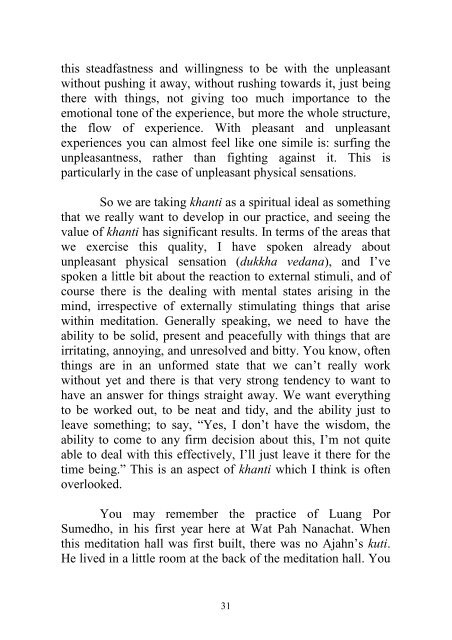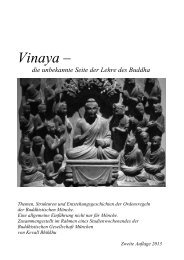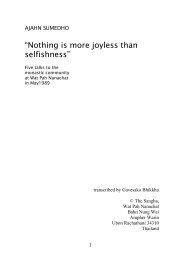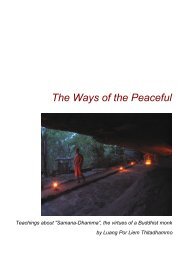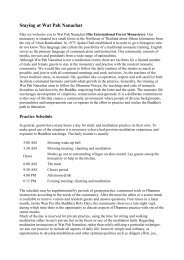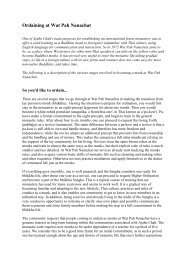Khanti - Wat Pah Nanachat
Khanti - Wat Pah Nanachat
Khanti - Wat Pah Nanachat
You also want an ePaper? Increase the reach of your titles
YUMPU automatically turns print PDFs into web optimized ePapers that Google loves.
this steadfastness and willingness to be with the unpleasant<br />
without pushing it away, without rushing towards it, just being<br />
there with things, not giving too much importance to the<br />
emotional tone of the experience, but more the whole structure,<br />
the flow of experience. With pleasant and unpleasant<br />
experiences you can almost feel like one simile is: surfing the<br />
unpleasantness, rather than fighting against it. This is<br />
particularly in the case of unpleasant physical sensations.<br />
So we are taking khanti as a spiritual ideal as something<br />
that we really want to develop in our practice, and seeing the<br />
value of khanti has significant results. In terms of the areas that<br />
we exercise this quality, I have spoken already about<br />
unpleasant physical sensation (dukkha vedana), and I’ve<br />
spoken a little bit about the reaction to external stimuli, and of<br />
course there is the dealing with mental states arising in the<br />
mind, irrespective of externally stimulating things that arise<br />
within meditation. Generally speaking, we need to have the<br />
ability to be solid, present and peacefully with things that are<br />
irritating, annoying, and unresolved and bitty. You know, often<br />
things are in an unformed state that we can’t really work<br />
without yet and there is that very strong tendency to want to<br />
have an answer for things straight away. We want everything<br />
to be worked out, to be neat and tidy, and the ability just to<br />
leave something; to say, “Yes, I don’t have the wisdom, the<br />
ability to come to any firm decision about this, I’m not quite<br />
able to deal with this effectively, I’ll just leave it there for the<br />
time being.” This is an aspect of khanti which I think is often<br />
overlooked.<br />
You may remember the practice of Luang Por<br />
Sumedho, in his first year here at <strong>Wat</strong> <strong>Pah</strong> <strong>Nanachat</strong>. When<br />
this meditation hall was first built, there was no Ajahn’s kuti.<br />
He lived in a little room at the back of the meditation hall. You<br />
31


